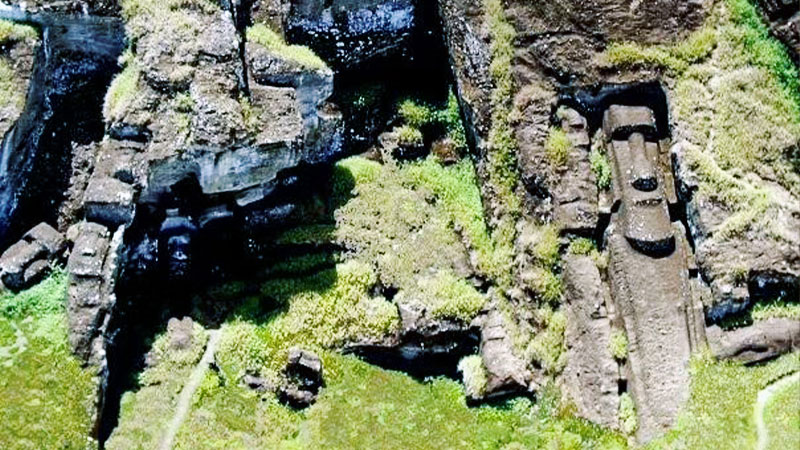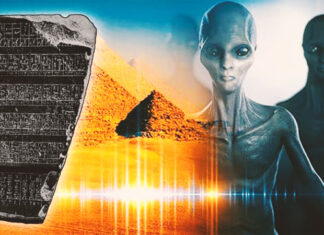Moai statues were carved by the Rapa Nui people on Easter Island and more than 1000 of them have been found scattered throughout the Chilean island.
The true number of Moai on the island is unknown because many remain buried in the Rano Raraku Quarry on the south coast of the island where the statues were built.
Easter Island is also being affected by climate change that has altered the world’s ecosystems, which has caused a major local drought, however this drought ended up generating an interesting discovery.
The new Moai was found at the bottom of Lake Rano Raraku, a volcanic crater that provided much of the stone used to carve the statues.
With the lack of rain, the lake dried up and researchers who were excavating in the area found the Moai statue by chance.
“This Moai is in the center of a lake that began to dry up in 2018. The interesting thing is that, for at least the last 300 years, the lake was three meters deep, such that no human being could have left the Moai there at that time,” said Ninoska Avareipua Huki Cuadros, director of the Ma’u Henua indigenous community that manages Rapa Nui National Park.

It is a 1.6 meter long statue, which was found lying down, looking at the sky, with a complete body and recognizable, but not clearly defined features.
Although it is not the same size as the other statues on the island, most measuring between 4 and 6 meters and some reaching 10 meters, it is still a significant discovery.
Experts believe it may have been one of the first carved Moai statues, likely dating back around 1,000 years.
Researchers are now trying to find out why these statues ended up being buried, which could lead to many discoveries about the island.
“This moai has high potential for scientific and cultural study, it is a very unique find, as it is the first Moai found inside the Rano Raraku crater lagoon”, says Huki Cuadros.
According to the Ma’u Henua community, the discovery of the Moai could open a new perspective on the history of the island and its ancestors.
The Giant Moai

Another recent discovery was a gigantic unfinished statue located in the Rano Raraku quarry, making it the largest statue ever carved on Easter Island.
If it had been finished, this Moai that became known as “El Gigante” (The Giant) would have measured around 20 meters tall, twice as tall as any other found on the island, and would have weighed approximately 200 tons.
So far no one has been able to say why the statue was left unfinished, but the new discoveries have been welcomed by local leaders who have fought to preserve Easter Island’s cultural heritage.
In recent years, several Moai statues have been damaged or destroyed, including a suspected fire attack in 2020 and damage caused by a resident with a truck.


















